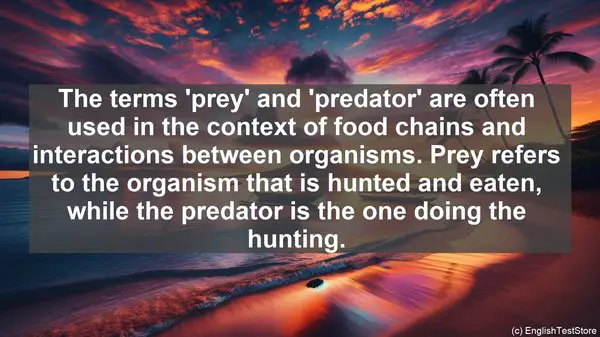Introduction
Welcome to our lesson on the top 10 commonly confused words in zoology and wildlife research. As students in this field, it’s crucial to have a strong grasp of these terms to ensure accurate communication and research. So, let’s dive right in!
1. Adaptation vs. Acclimation
The first pair of words that often cause confusion is ‘adaptation’ and ‘acclimation.’ While both refer to an organism’s response to its environment, there’s a subtle difference. Adaptation is a long-term, genetic change that helps an organism survive, while acclimation is a short-term, reversible adjustment. For example, a polar bear’s thick fur is an adaptation, while its ability to temporarily slow its metabolism in hibernation is acclimation.
2. Habitat vs. Niche
Next, we have ‘habitat’ and ‘niche.’ A habitat is the physical area where an organism lives, while a niche is the role it plays within that habitat. Think of a habitat as an organism’s address and a niche as its profession. For instance, a tree can be a habitat for birds, but within that habitat, each bird species has its own niche, such as feeding at different heights or eating different food sources.
3. Endangered vs. Threatened
Moving on, let’s clarify the difference between ‘endangered’ and ‘threatened.’ Both terms are used to describe species at risk, but there’s a distinction in the level of risk. ‘Endangered’ means a species is at a very high risk of extinction, while ‘threatened’ indicates a lower risk. These classifications are crucial for conservation efforts and determining the level of protection needed.
4. Invasive vs. Native
Now, let’s talk about ‘invasive’ and ‘native’ species. An invasive species is one that is not naturally found in a particular ecosystem but is introduced, often by human activities. These species can have detrimental effects on the native species and the ecosystem as a whole. On the other hand, native species are those that naturally occur in a specific area and have adapted to its conditions over time.

5. Prey vs. Predator
The terms ‘prey’ and ‘predator’ are often used in the context of food chains and interactions between organisms. Prey refers to the organism that is hunted and eaten, while the predator is the one doing the hunting. For example, in a lion and zebra scenario, the zebra is the prey, and the lion is the predator. Understanding these terms is crucial for studying the dynamics of ecosystems.
6. Biodiversity vs. Species Richness
When discussing the variety of life in an area, we often use the terms ‘biodiversity’ and ‘species richness.’ Biodiversity encompasses not only the number of species but also their genetic diversity and the variety of ecosystems they inhabit. On the other hand, species richness focuses solely on the number of different species in a given area.
7. Migration vs. Hibernation
Let’s now differentiate between ‘migration’ and ‘hibernation.’ Migration is the seasonal movement of animals from one region to another, often for breeding or finding food. Hibernation, on the other hand, is a state of inactivity and reduced metabolic rate during the winter months. While both are strategies to cope with environmental conditions, migration involves movement, while hibernation is about conserving energy.
8. Herbivore vs. Omnivore
In terms of dietary preferences, we have ‘herbivore’ and ‘omnivore.’ A herbivore is an organism that primarily consumes plants, while an omnivore has a more varied diet, including both plants and animals. For instance, a cow is a herbivore, while a bear is an omnivore. Understanding these feeding strategies is essential for studying food webs and energy flow in ecosystems.

9. Ecosystem vs. Community
The terms ‘ecosystem’ and ‘community’ are often used when discussing the organization of living organisms. An ecosystem includes all the living organisms (the community) in a particular area, as well as the non-living components, such as soil and water. In simpler terms, a community is like a neighborhood, while an ecosystem is the neighborhood and its physical environment.
10. Taxonomy vs. Systematics
Lastly, let’s clarify the difference between ‘taxonomy’ and ‘systematics.’ Both are concerned with classifying and organizing organisms, but there’s a slight distinction. Taxonomy focuses on naming and categorizing species, while systematics also considers their evolutionary relationships. In other words, taxonomy is like giving each species a name, while systematics is about understanding their family tree.
